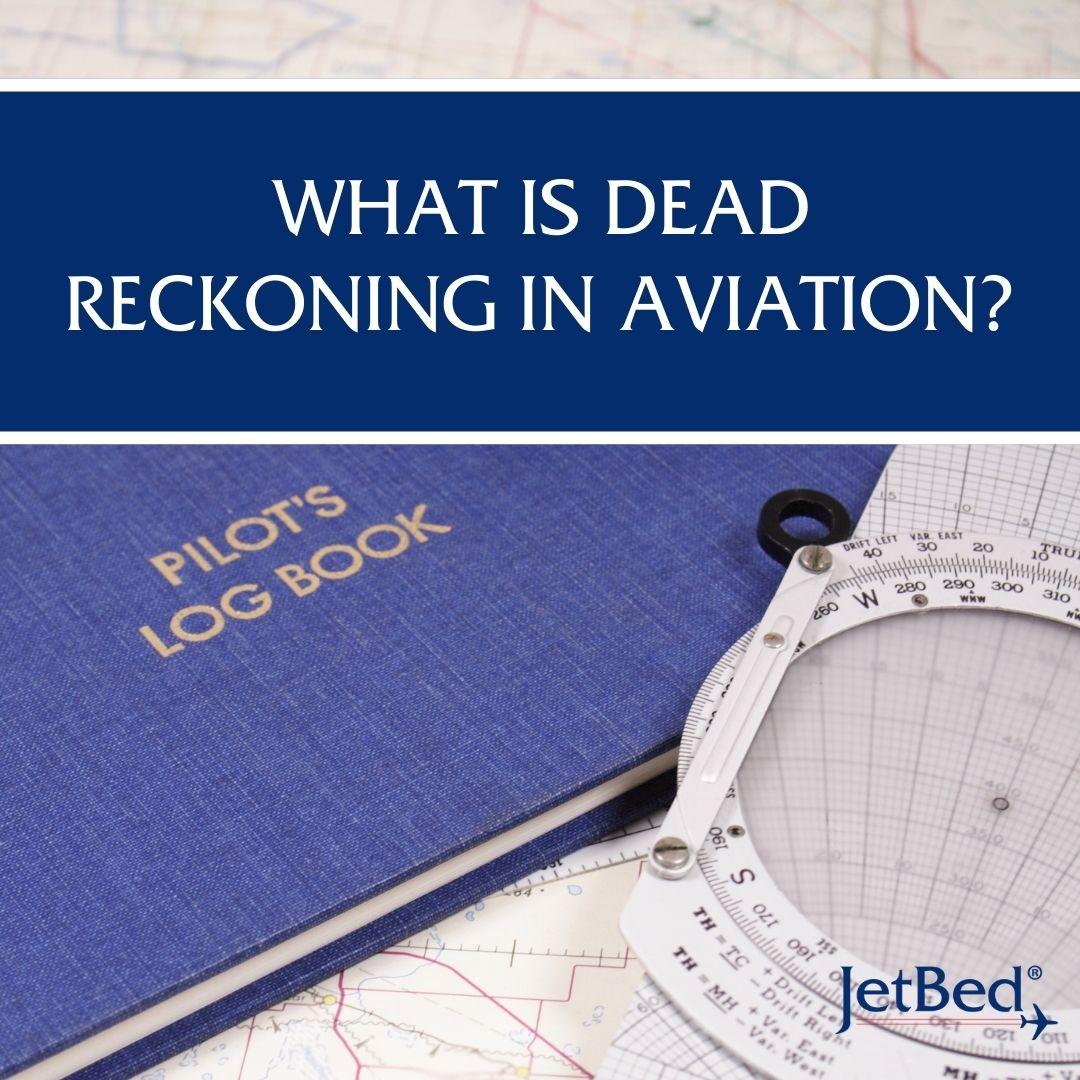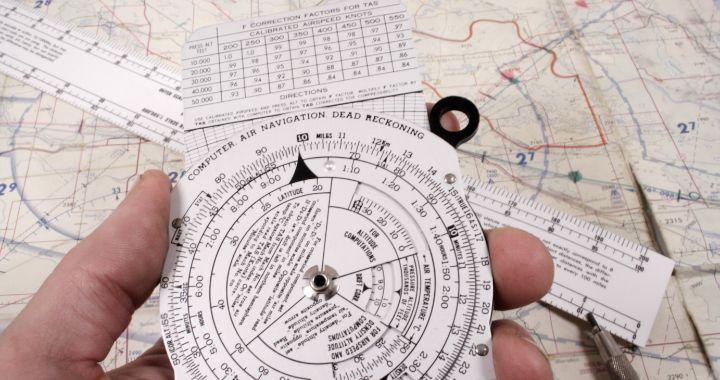When it comes to precise navigation, it’s a no-can-do for pilots if they are to ensure safe departure and arrival at their destination. Presently, there are different methods that help aviators in performing this function. Pilotage and dead reckoning help aviators to continually determine a flight’s location. While pilotage uses visual references, dead reckoning makes use of measured data.
Regardless of the conditions encountered during a flight, a pilot must be able to accurately estimate a track. This post focuses on dead reckoning, a technique dating back centuries that pilots still leverage today.
Before we get started, have you been searching for the right tool to give comfort and rest while coursing through the skies? Well, don’t miss another good night’s sleep! Instead, invest in a Jetbed: The Most Comfortable Way to Fly. With Jetbeds to fit all major aircraft and the highest-quality linens you never have to fly without one again!
Let’s begin.

What Is Dead Reckoning In Aviation?
Dead reckoning, also called deducted or deduced reckoning, is a navigation technique that uses visual cues and measurable quantities like ground speed, elapsed time, and magnetic course to estimate an aircraft’s position. It is a process of calculating current location based on a previously determined position, rather than via real-time position monitoring like VOR navigation.
Pilots performing dead reckoning use tools like magnetic compasses, watches, sectional charts, plotters, and flight computers to estimate key data and plot the airplane’s progress. Magnetic course is tracked from takeoff, factoring in any intentional or wind-induced course deviations. Ground speed is determined using airspeed readings cross-checked against winds aloft. Elapsed times between visual checkpoints or waypoints are recorded.
This information is continually assessed and the aircraft’s progress is manually projected on charts via dead reckoning plots. By taking into account headings, speeds, and estimated winds, dead reckoning essentially deductions and calculations that predict the new position of the aircraft along its projected course line. It is especially helpful for pilots when navigating over water or wilderness without reliable radio aids.

Pros and Cons of Dead Reckoning In Aviation
Dead reckoning, while manual, provides value as a supplemental navigation method with both benefits and shortcomings pilots must weigh. Let’s examine these pros and cons in more detail:
Pros of Dead Reckoning In Aviation
Independence from electronics.
This is a major advantage, as dead reckoning relies on basic manual tools like plots, watch, and compass that always function regardless of weather. If radios or flight management systems fail, dead reckoning keeps navigating possible.
Highly portable.
All necessary dead reckoning tools are extremely portable and can fit any aircraft’s limited cockpit space, allowing full navigation capability from any departure point with just paper charts, plotting sheets, a magnetic compass, and a watch.
Familiarity.
Most pilots learn dead reckoning fundamentals early in training, gaining extensive practice in visual navigation. This mastery means they remain fully comfortable with dead reckoning techniques even if infrequently used.
Precision Possible
Dead reckoning executed carefully using calibrated airspeeds, accurate timing, and corrected compass readings is very precise. This precision can rival a lot of modern area navigation systems, especially over short distances.
Cons of Dead Reckoning In Aviation
Susceptible to errors.
Small mistakes made in readings like wind speed or direction compound the greater the distance flown from the original plot. Errors accumulate rapidly, requiring frequent position fixes to verify accuracy.
Limited range.
Dead reckoning alone cannot provide confident navigation of extremely long overwater routes transiting continents or oceans. This is largely due to the inherent loss of precision over such vast distances.
Time-consuming.
Inputting multiple dead reckoning factors and continuously plotting airplane progress dampens mental capacities. This is even more serious for short-handed single pilots of smaller aircraft. Area navigation streamlines this process.
Obsolescence.
Regulations in controlled airspaces primarily endorse area navigation using radio fixes and databases. Dead reckoning becomes archaic except as a backup or when permitted in remote territories.

BONUS: Tools To Conduct Accurate Dead Reckoning Navigation
Several tools are fundamental for pilots to conduct accurate dead reckoning navigation:
Magnetic Compass
Aircraft magnetic compasses show heading flown, essential for plotting original and subsequent true courses navigated away from start points. Correct compass adjustment lets pilots navigate reliably. With a magnetic compass, you can easily distinguish between magnetic north and true north.
Sectional Charts
These detailed VFR maps contain features to visually verify positions over land via landmark matching, aiding dead reckoning updates. Roads and coastlines are also very useful in guiding aircraft.
Clock/Watch
Accurate timing records duration flown between fixes. This reveals ground speed and distance traveled from one estimated place to the next.
Flight Computer
Manual counterparts of navigation computers assist in plotting points by applying known data like headings, speeds, and wind angles/speeds mathematically.
Plotter
Chart-gridded navigational plotters physically draw projected courses and circles representing locations based on dead reckoning factors measured.
Wind Calculations
Known wind direction/speed figures help determine speed over the ground when factoring winds against aircraft speed through the air for precise navigation.
Position Fixes
Periodic checkpoint locations identified visually verify estimated dead reckoning plots and trigger refinement of subsequent projections for continuous accuracy.
Records
Logging critical navigation stats affords easy referencing and analysis if discrepancies emerge between projected and actual positions exposed through pilotage.
Dead reckoning is an important tool for navigation in aviation.
In conclusion, while possessing some shortfalls, dead reckoning remains an essential pilotage skill for navigating in conditions where electronics may malfunction or fail to be available. Its manual nature also serves as a reliable crosscheck of automated position indications. Aeronautical decision-making demands knowing when primary instruments necessitate a reversion to this backup sight navigation technique.
For more answers to questions on aerial navigation such as “What is a VORTAC in Aviation” and “What Force Makes an Airplane Turn?”, consult our blog. And, if you’re looking for an easy and convenient tool that will help you and your crew avoid flight fatigue, explore our fleet of JetBeds to find the one that best fits your aircraft.

